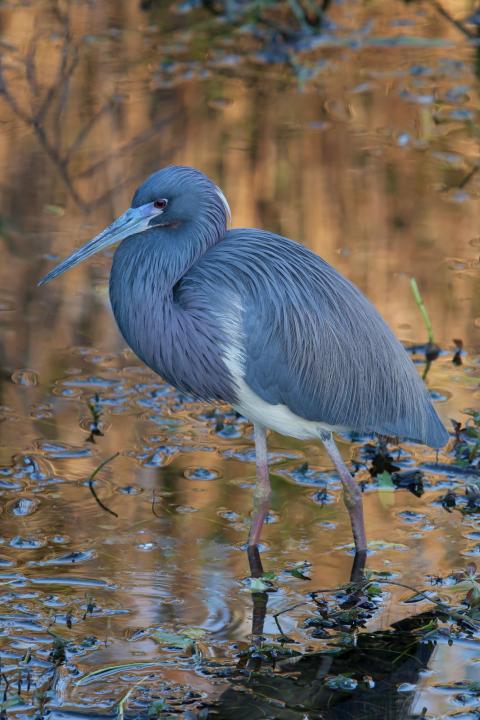Tricolored Heron
The tricolored heron (Egretta tricolor) formerly known in North America as the Louisiana heron, is a small heron. It is a resident breeder from the Gulf states of the USA and northern Mexico south through Central America and the Caribbean to central Brazil and Peru. There is some post-breeding dispersal to well north of the nesting range.
Tricolored heron's breeding habitat is sub-tropical swamps. It nests in colonies, often with other herons, usually on platforms of sticks in trees or shrubs. In each clutch, 3–7 eggs are typically laid.
This species measures from 56 to 76 cm (22 to 30 in) long, and has a wingspan of 96 cm (38 in).[2] The slightly larger male heron weighs 415 g (14.6 oz) on average, while the female averages 334 g (11.8 oz).[3] It is a medium-large, long-legged, long-necked heron with a long pointed yellowish or grayish bill with a black tip. The legs and feet are dark.
Adults have a blue-grey head, neck, back and upper-wings, with a white line along the neck. The belly is white. In breeding plumage, they have long blue filamentous plumes on the head and neck, and buff ones on the back.
Tricolored heron stalks its prey in shallow or deeper water, often running as it does so. It eats fish, crustaceans, reptiles, and insects.



